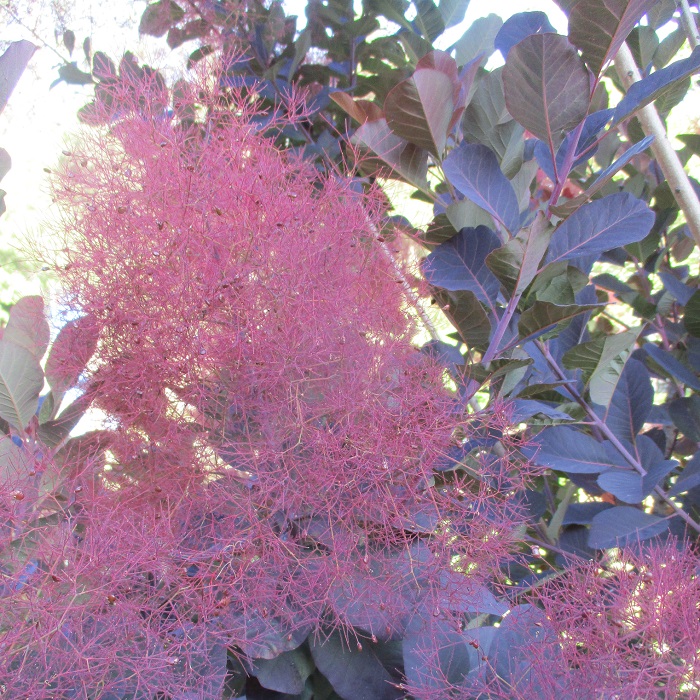UNITED STATES—Bronze foliage will never actually replace green foliage. Even if there were enough variety of plants with bronze foliage to do so, too much bronze would look dreary. Bronze is just another option for foliar color in landscapes with significant vegetation. It is distinct from simpler green, and contrasts nicely with gold, blue, gray and variegated foliage. Some bronze foliage is variegated too.
There is all sorts of bronze foliage. Some is brownish. Some is reddish. The most popular bronze foliage is rather purplish. It can be evergreen or deciduous. Annuals, perennials, shrubs, vines, trees and houseplants can provide bronze foliage. Most plants that provide bronze foliage are variants of plants that also provide bloom or fruit. Some are common. Others are rather rare.
Bronze appeals to us more than it appeals to nature.
Bronze foliage is not an advantage to plants that produce it. The most efficient foliage is green. Gray or bluish foliage has the advantage of reflecting some of the harsh sunlight that could scald it in severe climates. Otherwise, foliage that is a color other than green reflects more of the useful sunlight than it should. Incidentally, dark foliage also absorbs more of the sunlight that can scald it.
This is why many bronzed plants are noticeably less vigorous than their greener counterparts. Although it would not be an advantage in the wild, diminished vigor makes some bronzed plants more adaptable to compact home gardens. For example, the brownish bronze ‘Summer Chocolate’ silk tree will not get half as high and wide as the common silk tree. It can fit nicely into a cozy atrium.
Cultivars of purple leaf plum, Japanese maple and Eastern redbud are more familiar complaisant bronzed trees. ‘Ruby Lace’ honeylocust is still quite rare. Bronzed shrubbery includes smokebush, Chinese fringe flower, elderberry, barberry and ninebark. New Zealand flax, canna, houseleek, ajuga, mondo grass and coral bells are popular bronzed perennials. Cordyline is a larger perennial.
Bronze foliage adds a bit more color than typical green foliage. In the right situations, it is appealingly bold.
Highlight: Smokebush
Cliche is barely avoidable regarding smokebush, Cotinus coggygria. It provides rich foliar color from spring until autumn, with uniquely billowy bloom through summer. Then, it provides exquisite fall color until winter. Then, it provides sculptural form of bare stems until spring. Smokebush ‘has it all’. . . almost. All the spectacle distracts from a lack of floral fragrance. Will anyone ever notice?
Foliage is rich purplish bronze, bright greenish yellow or olive green through spring and summer. Formerly common old fashioned cultivars with olive green foliage are now rare. Nowadays, most are rich purplish bronze. Fall color is fiery yellow, orange and red. The round leaves are about one to three inches long. Purplish to pale pinkish plumes of smoke-like bloom are a striking contrast.
The largest of smokebush grow at a moderate rate to more than 15 feet high and wide. Most cultivars are more compact. They get wobbly in the ground if they grow too vigorously. Aggressive pruning during winter improves stability and enhances foliar color for the next season. However, minimal pruning of stable plants promotes bloom. Smoke tree wants full sun, but is not demanding.
Horticulturist Tony Tomeo can be contacted at tonytomeo.com.






